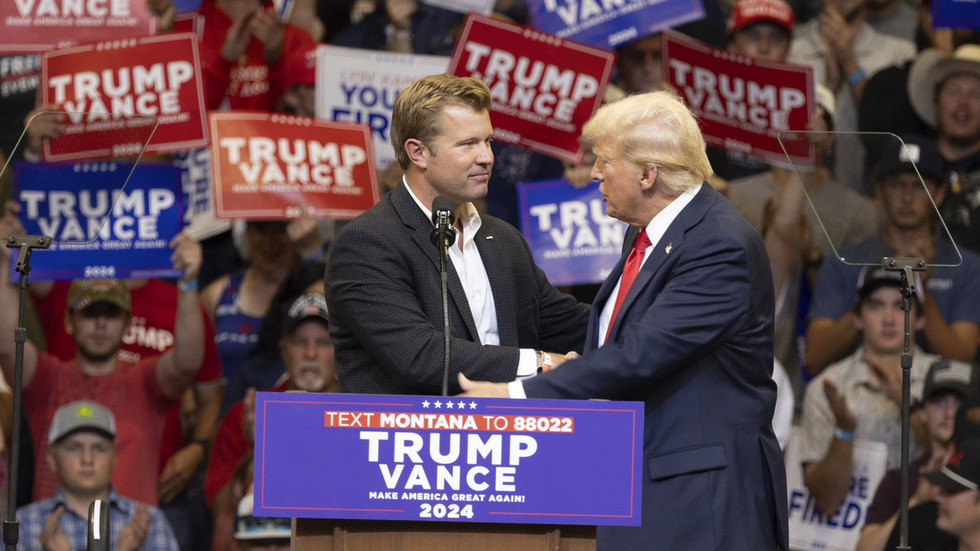A recent poll conducted by the New York Times, in partnership with Siena College, indicates a significant shift in the political landscape of the United States, particularly in Montana, where Republicans are poised to potentially “flip” a Senate seat. Current projections suggest that if Republicans can secure this seat, they would gain control of the Senate, assuming other races align with expectations. At present, Democrats hold 51 seats in the 100-member chamber, but Jon Tester, the incumbent Democrat from Montana, is now trailing his Republican opponent, Tim Sheehy, by seven percentage points—52% to 44%. The possible implications of this shift are critical as the nation eyes the upcoming elections not only for the Senate but also for the presidential race between Donald Trump and Kamala Harris, as well as the re-election of the entire House of Representatives.
Until recently, Democrats appeared to have a stable lead in various contested Senate races. However, with the anticipated loss of the Montana seat and a likely pick-up in West Virginia, where Democrat Joe Manchin has opted out of running for re-election, the numbers for the Democratic Party are beginning to look unfavorable. Currently, Republicans stand to potentially gain a seat, pushing the Senate balance to 51 seats in their favor. For Democrats, the scenario now boils down to a slim chance of maintaining a viable position, which would necessitate either a tie in the Senate or securing victories against incumbents in challenging races across the nation. The dynamics of the Senate are thus becoming a matter of significant concern for the Democratic Party following these new developments.
The pathway to maintaining Democratic Senate control appears increasingly narrow. The only realistic hope for the Democrats hinges on creating a scenario where they can force a tie in the Senate, assuming Kamala Harris wins the presidency. Such a situation would provide her with the opportunity to cast the deciding vote, akin to her role in the early years of Joe Biden’s presidency. Nevertheless, the Democrats would need to either unseat a Republican incumbent, a tall order given the current polling in key races. Reports suggest that the most vulnerable incumbents could be Texas Senator Ted Cruz and Florida Senator Rick Scott; however, Cruz is maintaining a four-point lead while Scott is ahead by nine points, limiting the Democrats’ options to reclaim ground.
Another potential avenue for the Democrats could emerge in Nebraska, where a competitive race is unfolding. While the Democrats have opted not to run a traditional candidate, they are supporting independent candidate Dan Osborn, who is reportedly in a tight race with the Republican incumbent, Deb Fischer. The support for an independent candidate illustrates the evolving strategies within the party as they attempt to navigate through this challenging electoral landscape. With early voting already underway in some states and election day set for November 5, the urgency for both parties to rally their bases and encourage voter turnout is palpable.
The broader implications of these Senate races extend beyond just numerical control. The outcomes could shape legislative agendas, influence national policies, and impact the overall political climate as the nation grapples with critical issues such as economic recovery, health care, and civil rights. With Republicans gaining momentum in key races, strategists within the Democratic Party are being forced to recalibrate their approaches to campaigning and voter outreach. The unpredictability of the electorate in swing states, coupled with the intensified focus on Senate races that were previously viewed as secure, suggests a dramatic shift ahead as the countdown to election day continues.
As the landscape continues to fluctuate, the stakes could not be higher for both parties as they prepare for the midterms. The potential for Republicans to achieve a majority in the Senate has sparked renewed energy within their ranks, while Democrats must urgently reassess their strategies in order to prevent further losses. With critical dates rapidly approaching, both parties are rallying their resources to shift public perception and influence voter behavior, as every seat could hold the key to shaping the future of American governance. The interplay of local issues, national sentiment, and the looming specter of a contentious presidential race will all contribute to a complex and determining electoral cycle, making it essential for both Republicans and Democrats to remain engaged and agile in their strategies.

